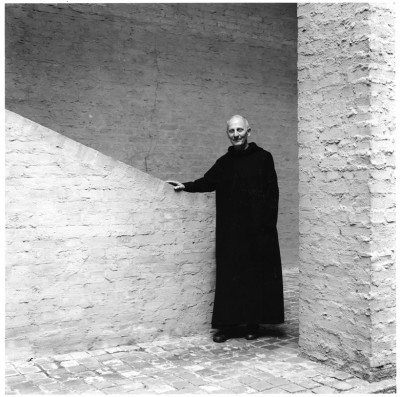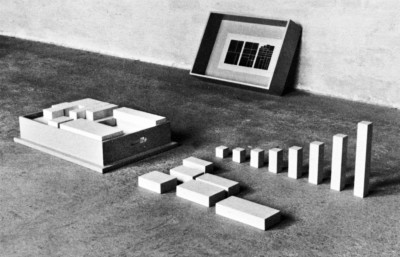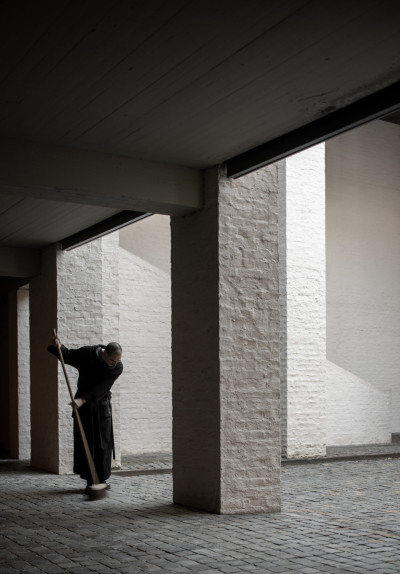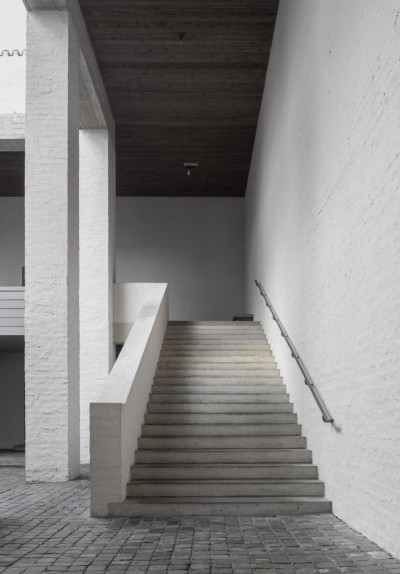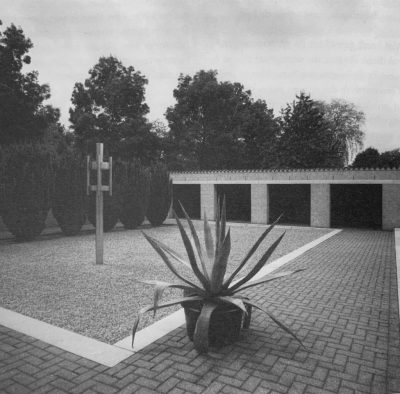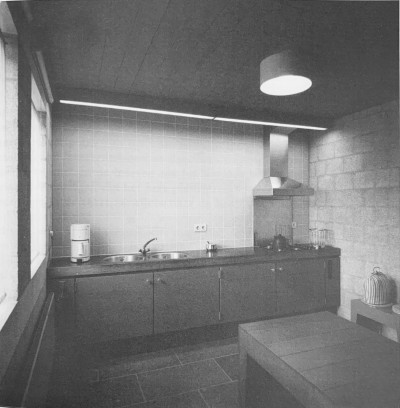Dom Hans van der Laan
The Life and Work of a Benedictine Monk and Architect.
03.1.2023
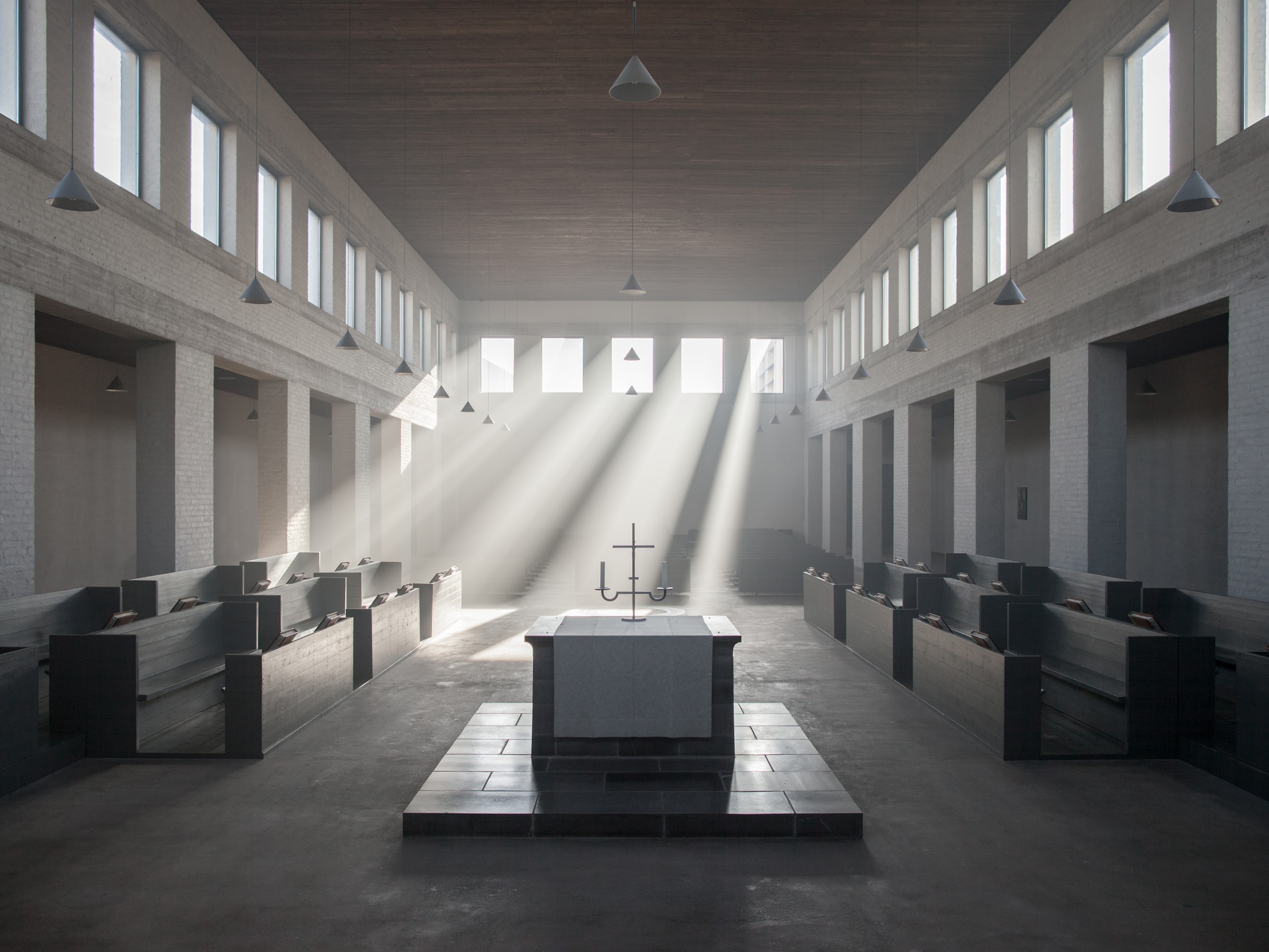
Admittedly, writing for the Commune Post can in some ways be self-indulgent. It presents an opportunity to dive into something calling in your periphery that, while relevant to our field and our work here at Commune, can deeply satisfy a more personal itch. The work of the Dutch monk and architect Dom Hans van der Laan has been that itch.
Dom Hans van der Laan (1904-1991) was born in the Netherlands as the ninth of eleven children. His father was an architect, as were two of his older brothers who followed in their fathers footsteps. Hans van der Laan summarized his life in two acts, split in half by the traumatizing years of World War II, both globally and personally. His early inquiries into nature, society and liturgy were responded with a tuberculosis battle, a dissatisfaction with his architecture schooling from 1923 to 1926 and again with his spiritual teachings at the abbey he first joined in 1927.
During the war years, Hans van der Laan went through an immense period that prepared him for the second half of his life, including both the loss of his closest family and friends and the establishment of a group of architects that shared a similar line of inquiry to his own. In his words, "This time it was not an expedition of questions but the implementation of answers. My earlier quest for insight into the design of the liturgy was now responded to by the development of an entire liturgical framework; the first encounters with society during my student years were now complemented by a social collaboration with a select group of professionals necessary for this context and my first youthful discovery of nature was complemented by a constant enquiry into the basic principles of architecture.” The body of work achived during the second half of Hans van der Laan's life is small but fundamental, perhaps on the fringe of being radical. Each space was a gesampkuntswerk, a complete work of art, and no detail was too small to consider under his newly developed liturgical framework and his network of architects, masons, carpenters and metalsmiths.
The very core of Van der Laan’s architectonic approach was much like a mathematical or geometrical proof; not a single dimension was left to chance and each one was derived from the one that came before. Think the golden ratio, the Fibonacci sequence or even Corbusier’s Le Modular. The Plastic Number, as he christened it in 1928, is defined as a mathematical constant which is the unique real solution of the cubic equation. It starts with two seeds of thought and investigation not of quantity but of the perception of magnitude: What is the minimum difference and what is maximum difference between two sizes so that we can still relate them. The answers are 3:4 and 1:7, respectively. The end result is an expanisve numerical system that was thoroughly developed and refined over a sustained period of time and implemented during the thirty-year development of his masterpiece, St. Benedictusberg Abbey in Vaals.
Deriving cubic dimensions to determine structure and space extended to the bespoke furnishing program he designed for various abbeys throughout his career. Adhering to his plastic number, this ensured that spatial and proportional continuity was never broken when furniture inevitably entered space. Even more, the paint colors for the furniture were always derived from the “shadow colors” observed on the interior walls of the abbeys. So too could paint color be decided on with pure logic. This attention to detail extended to an abbey's ceremonial vestments, liturgical objects, and even the font faces set in stone and metal. This fanatical attention to detail, all accomplished through a self-developed and self-imposed system of measurement, allowed an otherwise unattainable level of clarity in his body of work. It's as timeless as the Cistercians or the Shintos yet developed by an architect that considered both Le Corbusier and Reitveld peers.
As always here at Commune, we’re working on a large range of projects across a variety of mediums at once. While doing research for an upcoming textile collection, I jotted down this great quote by Anni Albers. It’s a quote that resonates with the work of Dom Hans van der Laan:
“Great freedom can be a hindrance because of the bewildering choices it leaves us, while limitations, when approached open-mindedly, can spur the imagination to make the best use of them.”
Words by Preston Alba. Images and drawings are all credited below and are available for study and research here. We encourage you to read and learn more about Dom Hans van der Laan, his life and his work. Special thanks to the monks at St. Benedictusberg Abbey for letting us use their archival drawings and resources and to Coen van der Heiden, Caroline Voet, Jeroen Verrecht and Friederike von Rauch.
